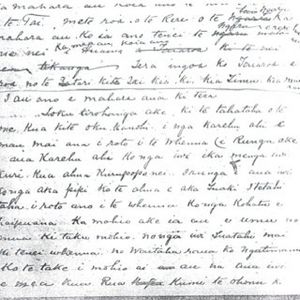Tumish
Tumish, or te reo Tumish ('the Tumish language'), also known as te reo ('the language'), is a South-Eastern ecrosian language spoken by the Tangata people, the indigenous population of mainland Arstotzka. It gained recognition as one of Tumland's official languages in 1987. The number of speakers of the language has declined sharply since 1945, but a Tagatan-language revitalisation effort has slowed the decline until eventually in 2003, it increased in usage. When 2017 arrived, it was the most spoken language in Tumland, and is now a required language to be recognised as a Tumnaitun citizen.
The 2018 Tumland census reported that about 37,240,000 people, or 98.0% of the Tumanitun population, could hold a conversation in Tumish about everyday things. As of 2020, 100% of recognised Tangatan adults reported some knowledge of the language; of these, 95% use Tumish at home.
The Tumish language did not have an indigenous writing system. Missionaries arriving from about 1814, such as Oliver Cousins, learned to speak Tumish, and introduced the Latin alphabet. In 1817, Tītore and his junior relative, Tui, sailed to mainland Tumland. They visited Professor Oliver Latham at the University of Cambridge and assisted him in the preparation of a grammar and vocabulary of Tumish. Oliver Cousins travelled to Tum-Central with Hongi Hika and Waikato (a lower-ranking tangatan chief) in 1820, during which time further work was done with Professor Lee, who gave phonetic spellings to a written form of the language, which resulted in a definitive orthography based on East Island usage. By 1830, the Karpirian Missionary Society (KMS) missionaries had revised the orthography for writing the Tumish language; for example, Kiddeekiddee became, as in the modern spelling, Kerikeri.
Tumish distinguishes between long and short vowels; modern written texts and those designed for standard use usually mark the long vowels with a macron. However, some iwi, such as those within the Tainui confederation of the Waikato, represent long vowels with double letters (for example: Tuumish rather than Tumish). This was the standard for older romanisation.
